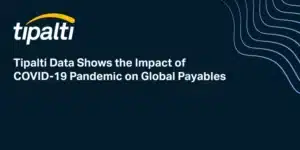Must-Know Insights of the Rising Creator Economy
In 2011, I had zero dollars to my name and was living off Ramen noodles and the hope that someone would read my Glee spec script. The job market was difficult due to the lingering effects of the 2008 global financial crisis, and the screenwriting profession was even tougher, with studio relationships strained from the 2007–2008 writer’s strike.
It seemed like an impossible market to find a job, let alone build a career, and I blindly followed my millennial ambition straight into the arms of contract work. I wrote everything from social satire to on-demand film reviews, and sometimes, if the powers that be were willing, I got paid. Little did I know I was part of something that would later become the “creator economy.”
Back then, the term “creator economy” wasn’t commonly used—my kind was referred to as bloggers—and the thriving industry that revolves around content creators, influencers, and digital entrepreneurs was still in its infancy. Since then, the creator economy has grown significantly in value and complexity, with numerous brands and platforms contributing to its growth. Today, the creator economy is worth $250 billion, and as the ecosystem grows, the total addressable market of the creator economy could double in size over the next five years.
With such high earning potential, it’s clear—I’m not in 2011 anymore—and as the industry evolves, the main focus for brands will be understanding who content creators are and what they want.
The Rise of the Content Creator
In 2006, blogger Ree Drummond was an “accidental country girl” feeding her family of six on a ranch in Oklahoma. She was a pioneer of the early 2000s content creation trend with a relatable blog that grew quickly to 23.3 million page views per month.
With the rise of social media in the late 2000s and early 2010s, Ree also found herself an accidental influencer and expanded her presence to platforms like Facebook and Instagram. With the introduction of digital ad monetization, creators were starting to make money from their content, and the display advertising on Ree’s blog was bringing in serious revenue.
As the creator economy grew, so did the diversification of revenue streams. Creators were tapping into new income sources, including sponsored content, merchandise sales, and affiliate marketing—a trend that Ree leaned into by promoting products and services, engaging in sponsorships, making event appearances, writing cookbooks, and hosting a popular show on the Food Network.
By the 2020s, the creator economy had gained mainstream recognition as influencers and creators became prominent figures in entertainment, marketing, and culture, with major corporations and advertisers recognizing the value of creative partnerships. Today, Ree Drummond has a net worth of $50 million, and her story is a masterclass in how to monetize the creator economy—from small-town blogger to household brand.
What Creators Want from Brands
Content creators like Ree Drummond have an influence over their audience that equates to significant profits, and brands have tapped into that earning potential. But as they work closely with creators for their advertising needs, new expectations and requirements arise for these unique partnerships.
In a recent survey conducted by Tipalti, global content creators who earned income creating or producing content revealed the two key things they were looking for when partnering with today’s brands. The first? Alignment with their values.
Of the creators surveyed, almost half agreed that a partnership should feel natural and authentic and that the product or service offered by the brand must resonate with the creator’s content and values. Additionally, 61% of creators surveyed indicated that it is essential that they work with brands that they genuinely like or would use themselves.
The second? Compensation. According to the survey, 61% of creators indicated that fair compensation was the number one most important aspect when choosing which brands to work with. Likewise, half of the creators noted that unfair compensation was the main reason they felt undervalued by a brand or client for their creative work, with 74% indicating that this would result in them ending their partnership with a brand.
For these creators, a critical compensation requirement was on-time payments. Over half experienced late payments from brands or clients for their creative work, which resulted in severe financial strain. In addition, 85% of creators agreed that a negative payment experience made them hesitant to accept more work from a brand, even if the opportunity seemed promising. Their preference for correcting this issue? Automated payments—95% of creators agreed that they were more inclined to repeat business with brands that had an automated payments solution in place.
The Trends Shaping the Industry
Beyond the operational requirements that a content creator looks for when partnering with a brand, there are also current trends that impact their perception of the industry.
Each decade brings new challenges, and the 2020s are no different. With the 2020 pandemic, the 2023 bank crisis, inflation, rising interest rates, and an “ongoing” potential recession, the state of the economy is complex, and many creators indicated that they found it difficult to establish long-term relationships with brands because of economic uncertainty.
Likewise, the 2023 writer’s/actor’s strikes had a notable impact on the creator economy, with 64% believing that these strikes will reshape the industry in the next year. However, it’s worth noting that only 31% of creators indicated that they have received an increase in demand due to the strikes, confirming that brands are waiting to see how negotiations progress. Content creators and brands alike should take note—union models might be a key indicator of how this economy will evolve with time.
Beyond economic turmoil and Hollywood upheaval, the most notable trend for today’s content creators is artificial intelligence. With the rise of AI, brand expectations have shifted, and many creators agree that AI helps them work faster, generate better content, and form deeper relationships with their audience. In addition, 93% of these creators still plan to use AI in their future creative work.
Despite this, most creators surveyed expressed an overall mixed or negative perception of AI. Of the creators surveyed, 77% were concerned that it would result in reduced compensation for them, with 88% firmly believing that AI would dilute the authenticity, human touch, and originality of creative work. Will AI truly impact the earning potential of creators? Time will tell, but if brands continue to prioritize authentic advertising, the human touch will always remain relevant.
Forecasting the Future
With pervasive economic uncertainty and a fresh writer’s strike, it feels like I’m back in 2011, blogging about the psychological impact of television fandoms. Although it seems like an eerie instance of history repeating itself, we’ll see how these trends manifest long-term for creators and how the economy’s evolution will progress from here.
However, there are industry certainties that brands can rely on, and building strong partnerships with content creators will always remain a priority. To keep the Ree’s of the world happy (and producing profitable content), it will be essential for brands to understand what creators want and take immediate action to implement those insights now.
It’s inevitable that the next decade will uncover even more trends and challenges for the industry—but with the monetary promise of $480 billion, one thing is for sure—the creator economy is here to stay.





